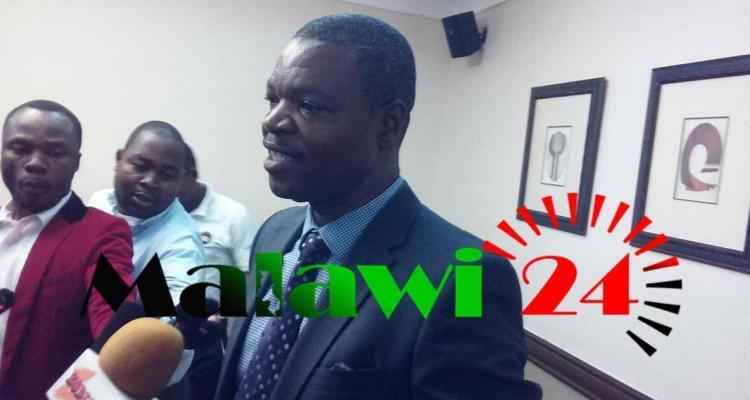
The Electricity Generation Company (EGENCO) has named outstanding projects they have lined up in a bid to ensure there are alternative power sources and to add capacity of electricity production so as to halt incessant power outages in Malawi.
EGENCO which was formed following the unbundling of the Electricity Supply Corporation of Malawi (ESCOM) on 1st January this year, has the core duty of generating power, something that supports ESCOM’s role of transmitting and distributing to the customers.
According to EGENCO’s Chief Executive Officer, William Liabunya, the company has set aside main projects which will run with the sole purpose of addressing alternative sources of power and adding the capacity.

Malawi has since time immemorial depended on hydropower which has been a challenge as the system inclined to effects of climate change hence the need to have alternative sources of generating electricity.
The projects include the Power Generation project which aim at expanding power stations, setting up a Solar PV Power Plant, and Diesel Power Plants one of which is operational in Lilongwe producing 15 Mega Watts. A 6 Megawatt diesel project has already started in Mzuzu with installations of 20 Megawatt plant on the cards in Mapanga, Blantyre while a 10 Megawatt plant will also be installed in Lilongwe.
There are also projects to take place at Mpatamanga where there will be a dam which will also be a storage facility for water.
“Through the Mpatamanga Project, we will be able to store enough water for the Station and be able to expand the downstream Kapichira Falls Power station by 100 Megawatts while also supplying water for the Shire Valley Irrigation Project,” Liabunya told reporters at a briefing on Wednesday.
The other project involves working towards upping the generation capacity from the current plant. At the moment, Wovwe Power station has a capacity of 4 Megawatts.
“To this however, studies to have made revelations that we have the chance of doubling the figures. Thus far, we intend to start a feasibility study towards expanding the Wovwe Power Station,” he added.
Liabunya also cited the projects aiming at improving the current machinery. This involve the rehabilitation of Nkula A Power Station – a project funded by the Millennium Challenge Corporation Compact.

The Station will add the capacity by 12 Mega Watts from the 24 Mega Watts current being produced now. The final touches on the project started in April while the main rehabilitation projects are expected to start this June.
Rehabilitation works also head to Tedzani 3 where the company will bring world class machinery. The projects are expected to run for a period of one and a half year.
Up to 40 Mega Watts will be added through this.
“The expectation in this project is that we will add 10 Megawatts to the 52 Megawatts being produced now. At the moment, the contract for the rehabilitation and uprating of the machines already started, we paid part of the money before the unbundling from ESCOM. The works are scheduled to kick-start in May,” said Liabunya while indicating that EGENCO has plans to be the leading power generator at the expense of other Independent Power Producers (IPP) which will be making their way to Malawi soon.
EGENCO also indicated that they have lined up rehabilitation works this Easter at Nkula A and B Power Stations – processes that will reduce capacity by 24 Mega Watts. This according to Liabunya will likely affect the Walkers Ferry for the Blantyre Water Board (BWB) to supply water, but was upbeat the measures the two companies have put in place will see to it that there is well controlled water supply within Blantyre.
The company will also be involved in dredging. EGENCO admits that siltation has been a drawback in the processes of power generation in Malawi.
At the moment, EGENCO is dredging at Nkula – a project supported by the Japanese Company.
Similar works are also taking place at Kapichira where a dredger from the MCCA Malawi compact project will do the work.
“Another key challenge we have been facing is poor rainfall patterns. For the past ten years we have had little rains. There have been reduced water levels in Lake Malawi. The lake remains the main reservoir for the Shire River. This is a big challenge.’’
He added: “At the beginning of every year, water levels in the Lake are supposed to be 474.5 meters above sea level but it was not the case this year. We had 473.0 meters above the sea level which is lower that the expectation. This is a challenge.”
He says the 0.2 meters above the sea level increase by the end of January this year was not just enough for power generation throughout the year. ‘’We will appreciate the fact that electricity is very vital for every economy. We will not relent but work very hard so that we have a vibrant power generation in Malawi,’’ added Liabunya.
The government of Malawi had earlier this year indicated it intends to implement the Power Market Restructuring (PMR) programme, meant to increase efficiency in power generation and creating enabling environment for IPP to invest in power generation.
Over the past months, there have been incessant power outages across Malawi with people in some locations only being served with electricity for 6 hours. As a way of conserving energy, ESCOM is distributing LED bulbs to its customers.
Malawi as a whole needs between 500 and 1,000 additional megawatts over the next five years to keep up with demand projections.














